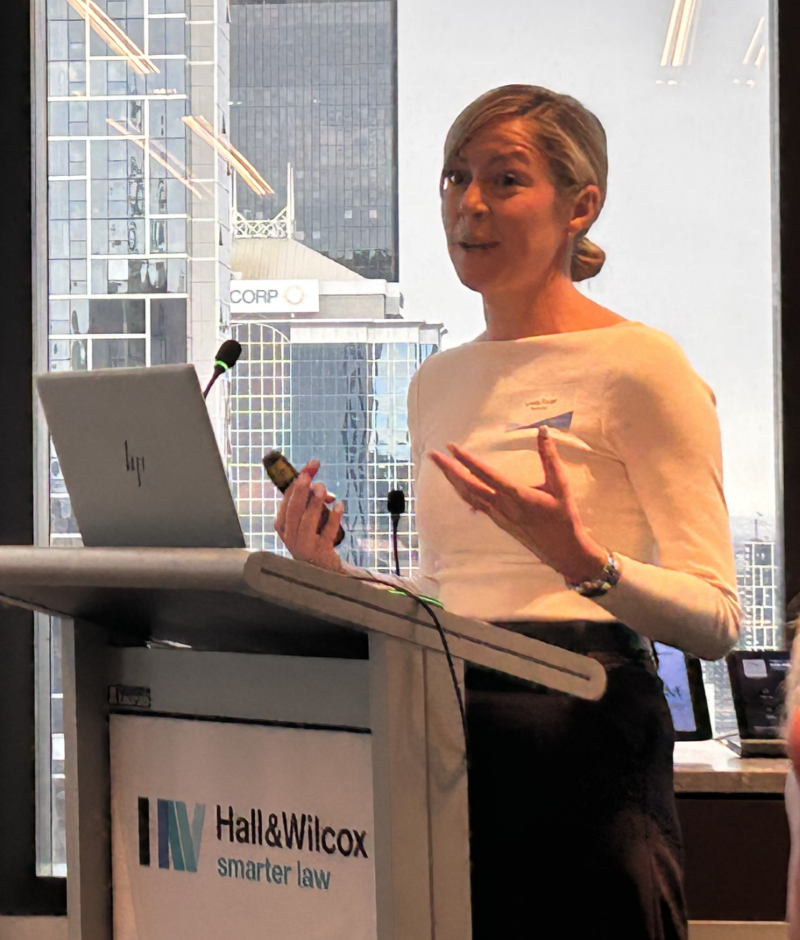Four keys to optimising value in commercial real estate investment
 Optimising value is high stakes for commercial real estate investment, with potential to improve the level and resilience of returns, enhance reputations, and protect against market shocks, according to Linda Rudd, CEO of property fund manager, Realside.
Optimising value is high stakes for commercial real estate investment, with potential to improve the level and resilience of returns, enhance reputations, and protect against market shocks, according to Linda Rudd, CEO of property fund manager, Realside.
Ms Rudd presented on the key principles to optimising value in real estate investing at the Property Funds Association of Australia (PFA) Master Class series.
“Value can mean a lot to different people, but it’s more than just price. It’s about sustainable risk-managed returns.”
A key starting point is understanding tangible and intangible value, Ms Rudd said. “The tangible value refers to the physical and the measurable value, such as a building.
“The intangible refers to anything that’s not physical, that will enhance the perception of value. It can be brand and reputation. Value might be reflected in what tenants might see as a well-managed building by a good landlord, or a poorly managed building by a bad landlord.”
Ms Rudd said each stage of the property lifecycle presents unique opportunities to extract and protect value. “Assets are like any business, and as you need a strategy for any business, you need a strategy for an asset.
“There are so many individuals involved in managing an asset, from fund managers, the asset managers, to the investors, the facility teams, and strategy brings all of these groups together and gives a direction to what we’re achieving.”
Ms Rudd looked at four keys to optimising value for asset managers:
One – Investment strategies: Diversification to offset downturns in specific markets is a key investment strategy, as is active asset management. “To ensure you extract maximum value from every square metre. This can be achieved via lease structuring or restructuring.”
Ms Rudd said long WALE leases, while often desirable, may limit the opportunities to unlock value throughout the lease. “But if a long WALE lease is structured correctly, for example, with reviews in the right areas and at the right time, in the right years, then you can capture rental reversion.”
Capital expenditure requires strategic thinking, prioritising anything that will add value to assist with tenant retention. “Capex may include value-adding upgrades to improve amenity, such as lobby upgrades, lifestyle upgrades such as rooftop social spaces, basketball courts, saunas – now I am hearing about pickleball courts.”
Debt structuring, which may include interest rate hedging to manage exposures in volatile markets, and ultimately using debt strategically, also needs to be part of the strategy.
Two – Income drives outcomes: Ms Rudd said income is the engine that drives value, reduces risk, and fuels long-term performance. “Ultimately it is the income that drives outcomes, being a direct link to value when capitalised. The inherent approach to valuing commercial real estate.
“Income growth directly boosts asset value and can be enhanced by successful leasing, rent escalations, rent renewals, and even through improving a building’s operational performance if doing so grows net income.
“Of course, when you have compelling income streams and stable income streams, it is going to attract lenders to your asset.”
Three – ESG as value enhancer: Ms Rudd said it is understandable that ESG is often considered a cost, but said ESG can bring significant upside. “Tenants pursue green buildings, so ESG can result in lower vacancies, and can lower operating costs in capital expenditure.
“Managing a more energy efficient building means you’ll be reducing your energy cost to run it.
“There are thankfully many ways we can reduce broadly, this is across waste, whether it’s more sustainable office fitouts, reusing fitouts, repurposing/ repositioning existing buildings and so on.
“Reducing embodied carbon by refurbishing buildings, rather than demolishing the building, is an under-acknowledged approach when it comes to looking at ways to reduce carbon.”
Ms Rudd also mentioned that regulations on reporting, associated with ESG, “is going to be more prevalent”.
Four – Protecting value from shocks: Value cannot be optimised without mitigating the risks that come with owning commercial real estate. “We can’t see into the future, but we can make sound assumptions as to how things may track – that may include interest rate movements, market shocks, cap rate expansion.
“It may also hinge on what our tenants may or may not do – for example, are they exposed to markets that aren’t performing well, or to geopolitical risk? Could this present a risk to our income, and our tenant’s ability to stay and pay the rent?”
Insurance and compliance are also key to protecting this value, including exposure to events such as floods or earthquakes. “Something also outside of our control but we can mitigate by looking at ways for buildings to reduce losses after significant events like floods.” Lease documentation is also key. “Ensuring that leases are covered for rental protection and rental downtime during these events”, Ms Rudd said.
PFA members benefit from access to networking and educational opportunities, industry research, and greater connection with the unlisted property funds industry – click here to find out more.
